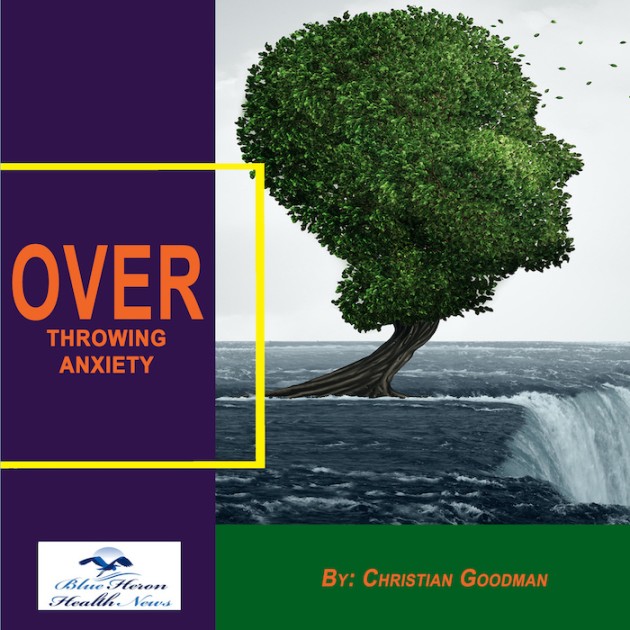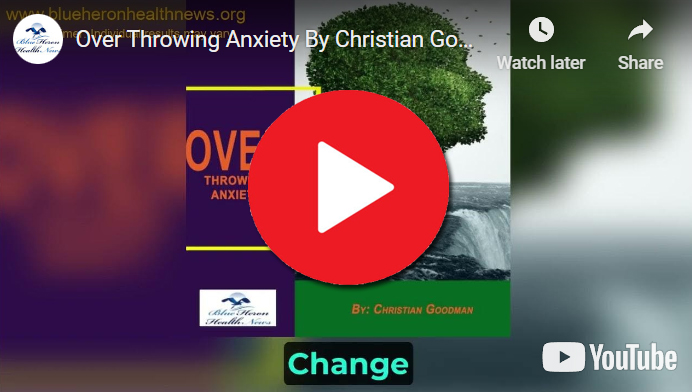
Overthrowing Anxiety™ This eBook includes a complete program to treat anxiety effectively. It guides you to learn the ways to find, understand, and accept the main cause of your anxiety and start using the techniques provided in it to treat the problem.
What are the benefits of massage therapy for anxiety relief?
Massage therapy can offer significant benefits for anxiety relief by promoting relaxation, reducing physical tension, and improving overall well-being. Here’s how massage therapy can help manage anxiety:
1. Reduces Physical Tension
Muscle relaxation: Anxiety often causes muscle tension, especially in areas like the neck, shoulders, and back. Massage helps release this tension, leading to a sense of relaxation and relief. The reduction of physical discomfort can directly contribute to a decrease in feelings of anxiety.
Promotes deep relaxation: By applying gentle pressure and soothing strokes, massage can trigger the body’s relaxation response, which helps reduce stress hormones like cortisol and increase feel-good hormones such as serotonin and dopamine.
2. Enhances Mood and Reduces Stress
Hormonal balance: Massage stimulates the release of endorphins and oxytocin, both of which can elevate mood and promote feelings of happiness and calm. These hormones counteract the physiological effects of anxiety, making it easier to cope with stressful situations.
Reduction of cortisol: Cortisol is the body’s primary stress hormone. Regular massage has been shown to reduce cortisol levels, which helps the body better manage anxiety and stress.
3. Improves Sleep Quality
Better rest: Anxiety often disrupts sleep, leading to a cycle of increased stress and fatigue. Massage therapy helps induce relaxation, making it easier to fall asleep and stay asleep. By improving sleep quality, massage reduces the impact of anxiety on your overall well-being.
Increases melatonin levels: The relaxation induced by massage can increase the production of melatonin, the hormone responsible for regulating sleep, thus improving sleep patterns.
4. Boosts the Parasympathetic Nervous System
Activates the relaxation response: Massage activates the parasympathetic nervous system (the “rest and digest” system), which counteracts the sympathetic nervous system (the “fight or flight” response). This shift from a heightened state of alertness to a state of calm can lower anxiety and reduce physical symptoms such as rapid heart rate and shallow breathing.
5. Provides a Sense of Connection and Comfort
Touch therapy: Human touch has been shown to be calming and comforting. For those who experience anxiety, receiving massage therapy can foster a sense of emotional connection and security, which helps ease feelings of loneliness or stress.
Therapeutic relationship: The trust between a massage therapist and the person receiving therapy can offer emotional support and contribute to a sense of safety, further reducing anxiety.
6. Increases Mindfulness
Present-focused awareness: Massage therapy encourages mindfulness by helping individuals focus on the sensations in their body and the present moment. This practice can take the mind off anxious thoughts and allow a person to engage in the moment rather than worry about future uncertainties.
Reduces mental clutter: The calm, quiet environment of a massage session gives individuals a break from daily stressors, allowing them to clear their mind and focus on their body’s sensations.
7. Improves Circulation and Reduces Pain
Increased blood flow: Improved circulation from massage helps deliver oxygen and nutrients to muscles and tissues, promoting physical healing and reducing muscle soreness, which can often accompany anxiety.
Relief from chronic pain: Anxiety can contribute to chronic pain conditions like headaches, back pain, or neck pain. Regular massage therapy can help alleviate these symptoms, providing relief from the physical discomfort that may exacerbate anxiety.
8. Long-term Benefits
Stress resilience: Over time, regular massage can help improve the body’s ability to handle stress by promoting long-term relaxation, reducing anxiety levels, and supporting a more balanced emotional state.
Improved coping skills: As anxiety decreases with consistent massage therapy, individuals may find themselves better equipped to handle stressful situations and more in control of their emotional responses.
9. Complementary to Other Therapies
A holistic approach: Massage therapy can be used alongside other treatments for anxiety, such as therapy or medication, to enhance overall effectiveness. It provides a natural, non-invasive option for alleviating symptoms of anxiety, especially for those looking for complementary approaches to their mental health.
Conclusion
Massage therapy offers a range of benefits for anxiety relief, including relaxation of muscle tension, improved mood, better sleep, and the promotion of overall well-being. Regular sessions can help manage both the physical and emotional symptoms of anxiety, providing a holistic approach to mental health. Whether used on its own or in combination with other treatments, massage therapy can be a powerful tool for improving emotional resilience and reducing the impact of anxiety on daily life.
Mindfulness-Based Stress Reduction (MBSR) is a therapeutic program that combines mindfulness meditation and yoga to help reduce stress, anxiety, and improve emotional well-being. It is based on the concept of being present in the moment and developing greater awareness of your thoughts, feelings, and bodily sensations without judgment. Practicing MBSR regularly can help reduce anxiety by cultivating a calm, centered mind. Here’s how you can practice MBSR to reduce anxiety:
1. Mindful Breathing
How to do it: Begin by sitting comfortably with your back straight, either on a chair or cushion, and close your eyes. Focus your attention on your breath as it enters and leaves your body. Observe the natural rhythm of your breath without trying to control it.
When to do it: If you feel anxiety rising, take a few minutes to practice mindful breathing. It helps activate the body’s relaxation response and can calm the nervous system.
Tips: If your mind wanders, gently bring your attention back to your breath without judgment. You can also use a counting technique, such as counting each inhale and exhale to keep your focus.
2. Body Scan Meditation
How to do it: Lie down in a comfortable position and close your eyes. Starting at your toes, slowly bring your attention to each part of your body, moving upward. Pay attention to any sensations, such as tension, warmth, or relaxation, and simply observe them without trying to change them.
When to do it: Body scan meditation can be done at the beginning or end of your day, or whenever you need to release physical tension or ground yourself. It helps increase body awareness and can reduce anxiety caused by physical stress.
Tips: If you notice areas of tension, don’t try to force them to relax. Instead, acknowledge them and gently guide your attention away if needed.
3. Mindful Movement (Yoga)
How to do it: MBSR includes yoga as a way to connect the mind and body. Simple, slow movements that focus on the breath can reduce physical tension and bring awareness to the present moment. You can practice basic poses like child’s pose, cat-cow, or seated stretches.
When to do it: Incorporating yoga into your daily routine (even for 10-15 minutes) can help ease anxiety, especially when you’re feeling physically tense or mentally overwhelmed.
Tips: Focus on each movement and the sensation in your body, rather than rushing through the poses. Use your breath to guide the movements and deepen the practice.
4. Mindful Awareness in Daily Activities
How to do it: Practice bringing mindfulness to everyday tasks. This could include eating, walking, washing dishes, or even driving. Instead of doing tasks automatically, focus your attention fully on the activity at hand. For example, when eating, savor each bite, notice the taste, texture, and temperature of your food, and eat slowly.
When to do it: You can practice mindfulness anytime during the day, especially when you feel yourself becoming anxious or overwhelmed.
Tips: If your mind starts to wander, simply notice it and gently bring your attention back to the activity. The goal is to stay present in the moment, rather than becoming lost in anxious thoughts.
5. Loving-Kindness Meditation (Metta)
How to do it: Sit quietly and focus on your breath. Then, silently repeat phrases such as “May I be happy,” “May I be safe,” or “May I be at peace.” After focusing on yourself, extend these wishes to others, starting with loved ones, and gradually including neutral people and even those you may have conflicts with.
When to do it: Loving-kindness meditation helps foster compassion, which can be healing for those with anxiety. It can be especially helpful when you’re feeling disconnected or overwhelmed by negative thoughts.
Tips: Focus on the feelings of warmth and kindness as you repeat the phrases. This practice can help counteract self-critical thoughts and promote a sense of emotional balance.
6. Mindfulness of Thoughts (Cognitive Awareness)
How to do it: Mindfulness involves observing thoughts without attachment. When you notice anxious thoughts arising, acknowledge them without judgment. Instead of engaging with the thought or trying to push it away, simply observe it as it comes and goes, like clouds passing through the sky.
When to do it: This practice is especially useful when anxiety-provoking thoughts arise throughout the day. By not engaging with them, you can reduce the power they have over you.
Tips: If you find yourself getting caught up in thoughts, gently redirect your attention to your breath or another mindfulness practice, such as body scanning or loving-kindness meditation.
7. Regular Practice of Sitting Meditation
How to do it: Set aside time each day to practice sitting meditation. Find a comfortable, quiet space and sit in a relaxed but alert position. Focus on your breath, body sensations, or a mantra. When your mind wanders, gently return your attention to your anchor (breath, body, or mantra).
When to do it: Sitting meditation can be a powerful way to build mindfulness and resilience against anxiety. Start with just 5-10 minutes per day and gradually increase the time as you feel comfortable.
Tips: It’s normal for your mind to wander, but with practice, you’ll be able to return to the present moment with more ease.
8. Group Mindfulness Practice (MBSR Program)
How to do it: If possible, join an MBSR program, often offered in community centers, hospitals, or online. These programs typically last 8 weeks and include guided mindfulness exercises, group support, and instruction on applying mindfulness to various life situations.
When to do it: An MBSR course offers structured guidance for incorporating mindfulness into your daily routine. It also provides a supportive community to help stay motivated and consistent.
Tips: Be open to the group dynamic and learn from others’ experiences. Having accountability can help you stay committed to the practice.
Benefits of Practicing MBSR for Anxiety Relief
Reduces stress response: MBSR teaches you to respond to stressful situations with greater calmness and clarity, instead of reacting impulsively.
Increases emotional regulation: It helps you become more aware of your emotions and less reactive, enabling you to manage anxiety in healthier ways.
Enhances self-awareness: By becoming more attuned to your thoughts, feelings, and bodily sensations, you can better understand the root causes of your anxiety.
Improves relaxation and sleep: Regular practice can help calm the mind and body, improving sleep quality and helping you feel more rested and refreshed.
Boosts resilience: With consistent practice, MBSR helps build resilience against life’s challenges, reducing the frequency and intensity of anxiety episodes.
Conclusion
Practicing mindfulness-based stress reduction (MBSR) involves focusing on the present moment, cultivating awareness, and learning to manage stress in healthier ways. By incorporating techniques such as mindful breathing, body scan meditation, yoga, and awareness of thoughts, you can reduce anxiety and increase emotional well-being. Whether practiced on your own or through a structured MBSR course, this approach offers a holistic way to combat anxiety and foster greater mental clarity, relaxation, and resilience.
Overthrowing Anxiety™ This eBook includes a complete program to treat anxiety effectively. It guides you to learn the ways to find, understand, and accept the main cause of your anxiety and start using the techniques provided in it to treat the problem.
